LinkedIn is no longer just a recruitment platform—it’s one of the most powerful B2B lead generation tools available, especially in markets like Thailand where traditional digital channels are becoming saturated and increasingly expensive. With over 61 million senior-level influencers globally and a fast-growing user base in Southeast Asia, LinkedIn offers direct access to decision-makers across industries.
For Thai businesses looking to grow beyond referrals or cold outreach, LinkedIn provides a smarter, more scalable alternative. Whether you’re a tech startup in Bangkok, a logistics firm in Chonburi, or a consultancy in Chiang Mai, the platform lets you build brand authority, attract your ideal clients, and generate leads consistently through organic and paid strategies.
In this guide, you’ll learn how to optimise your profile for conversions, craft content that positions you as an industry expert, and connect with high-value prospects without sounding salesy. We’ll also explore how LinkedIn Ads can help you scale, and why a hybrid approach often yields the best ROI in the Thai B2B landscape.
✅ Key Takeaways:
- Why LinkedIn is essential for B2B in Thailand
- How to build a client-attracting profile
- Organic vs paid lead generation strategies
- Real-world examples and actionable steps
Why LinkedIn Is Crucial for B2B Growth in Thailand
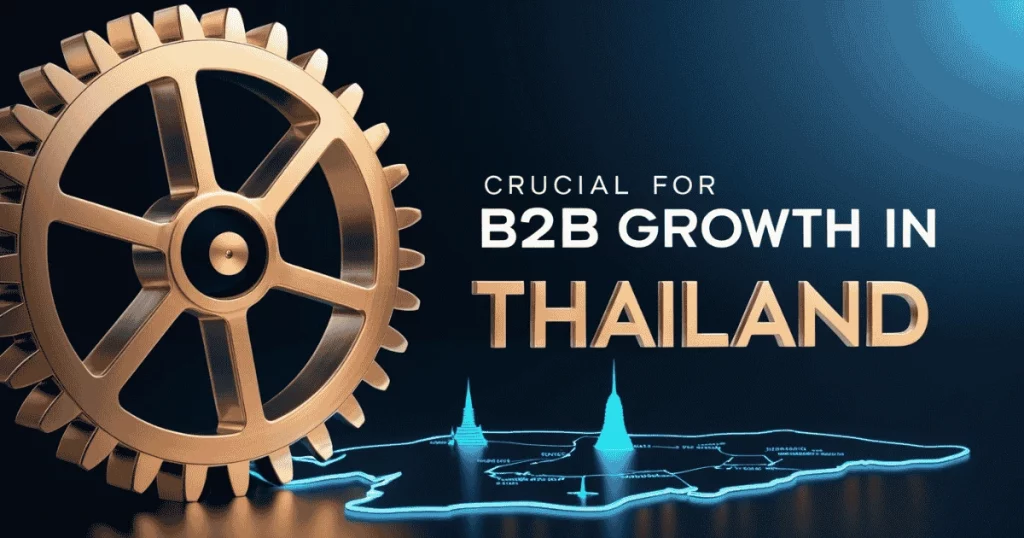
LinkedIn is rapidly becoming the platform of choice for B2B marketers in Thailand—and it’s easy to see why. Unlike Facebook or Instagram, where users are in “scroll and relax” mode, LinkedIn users are there to learn, connect, and do business. This intent-driven behaviour makes it the perfect environment for B2B brands to get in front of decision-makers and nurture high-quality leads.
The LinkedIn Landscape in Southeast Asia
LinkedIn’s growth in Thailand has been steady, with more than 3 million Thai professionals now active on the platform. What’s particularly valuable is the concentration of mid-to-senior-level professionals, from CEOs and marketing directors to procurement managers. These are the exact people who influence buying decisions—and they’re more accessible than ever.
Even more importantly, LinkedIn’s algorithm is organic-friendly, which means you don’t need a huge ad budget to get noticed. Thai B2B marketers are already taking advantage of this by posting regularly and engaging strategically, often outperforming competitors still relying heavily on paid Google or Facebook ads.
B2B Buyer Behaviour on LinkedIn
Today’s B2B buyers conduct up to 70% of their research online before ever speaking to a sales rep. LinkedIn plays a key role in that journey. Whether it’s reading thought leadership posts, checking a founder’s profile, or evaluating social proof, buyers use LinkedIn to qualify potential partners.
And unlike cold email or telemarketing, LinkedIn allows for warm lead nurturing. You can stay top-of-mind through consistent, relevant content—without being intrusive.
Organic Reach vs Traditional Channels
Here’s the kicker: LinkedIn’s average organic reach is 5–7% of your network, often much higher than Facebook’s sub-1% reach. This means that even a modest following can produce serious engagement, especially in Thailand where the competition is still catching up.
If your business thrives on relationship-building, trust, and positioning—LinkedIn isn’t optional. It’s essential.
Crafting a High-Converting LinkedIn Profile
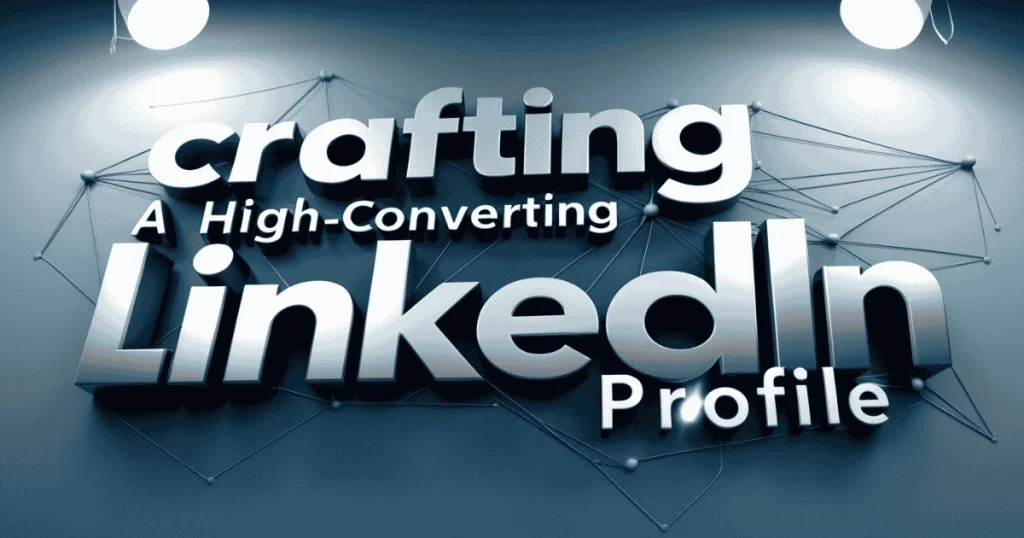
Before you post content or run ads, your LinkedIn profile must be built to convert. Think of it as your digital storefront—if it’s unclear, outdated, or bland, potential clients will keep scrolling. A well-optimised profile doesn’t just look good; it builds trust, communicates value, and prompts action.
Personal Profile Optimisation
Your personal LinkedIn profile is often the first touchpoint for potential clients or partners. Here’s how to make it work for you:
- Headline: This is prime real estate. Skip generic job titles like “Managing Director.” Instead, speak directly to your audience. For example:
🟢 “Helping Thai SMEs Generate Leads with Strategic LinkedIn Marketing” - Banner Image: Use a custom-designed banner that visually reflects your service and value proposition. Include a CTA or tagline in Thai and English for broader appeal.
- About Section: This is your pitch. Start with what you do, who you help, and the results you deliver. Keep it concise, but human. Include keywords like LinkedIn marketing Thailand, B2B lead generation, and digital strategy.
- Featured Section: Highlight key wins—case studies, client testimonials, or viral posts.
- Contact Info: Make it ridiculously easy to reach you. Include Line ID or WhatsApp if your audience prefers it.
Business Page Best Practices
Many businesses in Thailand overlook their company pages, but they’re a powerful asset when set up properly.
- Branding Consistency: Match your visual identity—logo, colours, tone—with your website and other channels.
- Services Tab: Make sure your service list is comprehensive and keyword-optimised.
- Call-to-Action Button: Choose the right CTA—“Contact Us,” “Visit Website,” or “Learn More”—and test what drives clicks.
- Regular Updates: Treat your page like a micro-content hub. Post at least 2–3 times per week to show activity and build credibility.
An optimised profile doesn’t just enhance visibility—it builds immediate trust, which is the currency of B2B marketing.
LinkedIn Content Strategy That Attracts and Converts
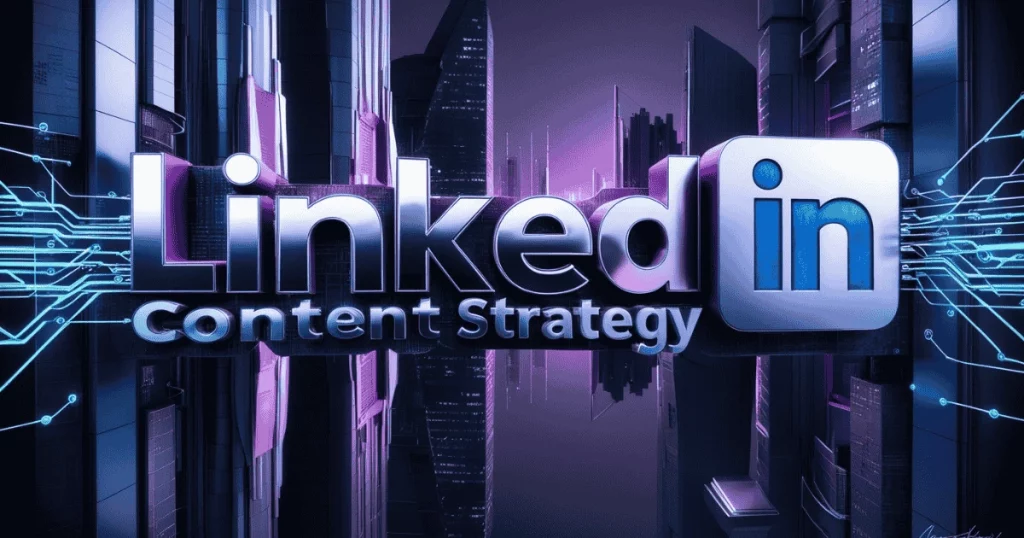
Content is the fuel that powers LinkedIn’s lead generation engine. But random posting won’t get you far—especially in the competitive Thai B2B space. You need a strategy that speaks to your audience’s pain points, builds authority, and encourages engagement. When done right, your content will do the heavy lifting of attracting leads before you even reach out.
What to Post: Thought Leadership vs Case Studies
Your content should position you as a trusted expert, not just another service provider. Blend the following types for maximum impact:
- Thought Leadership: Share insights, opinions, or trends relevant to your industry. Talk about what’s working in Thailand, what’s outdated, and where things are headed. Example: “Why Thai SMEs Are Wasting Money on Facebook Ads—and What to Do Instead.”
- Case Studies & Client Wins: These build instant credibility. Break down real results with numbers and context. Use a storytelling format: problem → solution → outcome. Keep it relatable and jargon-free.
- Behind-the-Scenes & Personal Lessons: People buy from people. Share your experiences—failures included—to make your content more human and trustworthy.
Content Types That Work in Thailand
The Thai market engages with slightly different content formats than Western audiences. Here’s what tends to perform best:
- Text-Only Posts: Surprisingly powerful, especially when written in a clear, conversational tone.
- Carousels: Ideal for breaking down tips, frameworks, or checklists—visual, swipeable, and save-worthy.
- Videos: Short, subtitled videos in Thai or bilingual formats boost reach and accessibility.
- Polls: Great for engagement and market research—ask about industry trends or pain points.
Posting Tip:
Engagement is highest during weekday mornings (8–10 AM Thailand time), when professionals are starting their day and checking their feeds.
Engagement Tactics
Content is only half the game—how you engage with others matters just as much.
- Comment Strategically: Show up in your ideal clients’ posts with thoughtful comments. This builds visibility and credibility fast.
- Use Hashtags Wisely: Combine broad ones like #B2BMarketing with niche Thai-specific tags like #การตลาดธุรกิจ or #LinkedInThailand.
- Start Conversations: End each post with a clear question or CTA. Invite feedback, DMs, or opinions to open the door for business conversations.
✅ Pro Tip Box:
Thai audiences love bilingual content. A mix of Thai and English in key posts helps you connect with both local decision-makers and international clients.
Smart LinkedIn Networking for Lead Generation
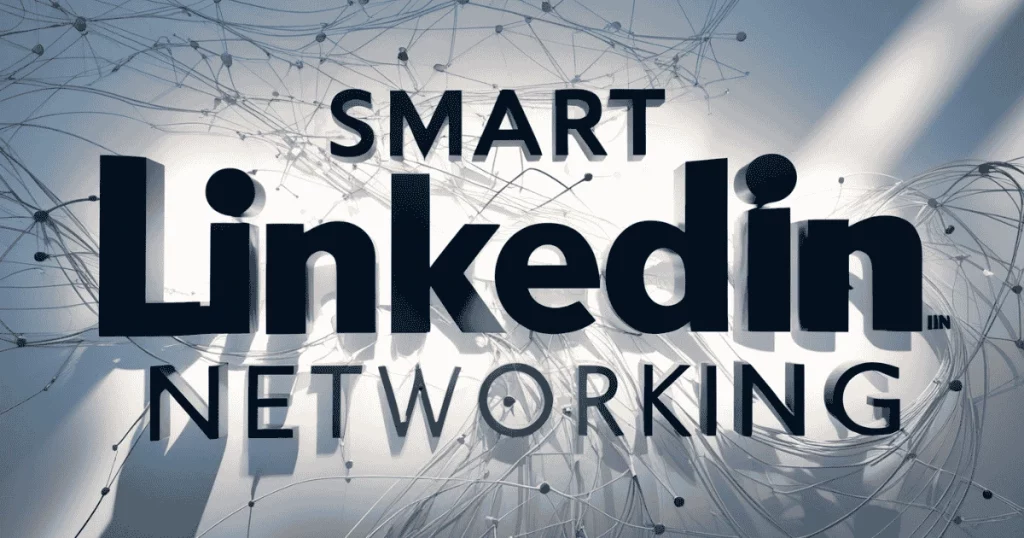
You could have the best profile and post brilliant content—but if you’re not connecting with the right people, your lead generation efforts will fall flat. Networking on LinkedIn isn’t about racking up random connections. It’s about building a targeted ecosystem of decision-makers, collaborators, and prospects who actually move the needle for your business.
Building the Right Connections
Effective LinkedIn networking starts with strategic filtering. Instead of sending out dozens of connection requests blindly, use LinkedIn’s powerful search tools to target by:
- Job Title: Look for decision-makers like Marketing Managers, Procurement Directors, or Business Owners.
- Industry: Focus on sectors aligned with your services—e.g. manufacturing, fintech, logistics, or SaaS.
- Location: Prioritise Thailand, but also regional ASEAN markets if you serve a broader area.
Pro Tip: Use Boolean search terms (e.g. “CEO” AND “Bangkok”) to narrow your results and surface better leads.
Once you identify your ideal connections, review their profile and activity before hitting “Connect”. It shows respect—and improves your acceptance rate.
Outreach Messages That Don’t Suck
The fastest way to get ignored? Sending a generic “Let’s connect” message or launching straight into a sales pitch.
Instead, craft genuine, personalised outreach that opens a door to conversation. Try templates like:
👋 “Hi [Name], I saw your post on [topic] and really appreciated your perspective. I work with B2B brands here in Thailand as well—thought it’d be great to connect!”
Or:
“Hi [Name], I noticed you’re active in [industry]—we help companies in that space generate qualified leads through LinkedIn. Happy to connect and exchange ideas.”
No pressure. No pitch. Just value-driven connection.
Leveraging Groups and Communities
LinkedIn Groups are underused but still powerful in niche B2B circles.
- Join Thai-based groups relevant to your sector (e.g. Thailand Digital Marketing, ASEAN Business Network).
- Add value by commenting and sharing insights—not by dropping links or pitching services.
- Use groups to identify active users and build 1:1 connections from there.
Building your network this way turns LinkedIn from a static feed into a pipeline of warm leads—and helps you stay top-of-mind for the right people.
Using LinkedIn Advertising to Scale Your Reach
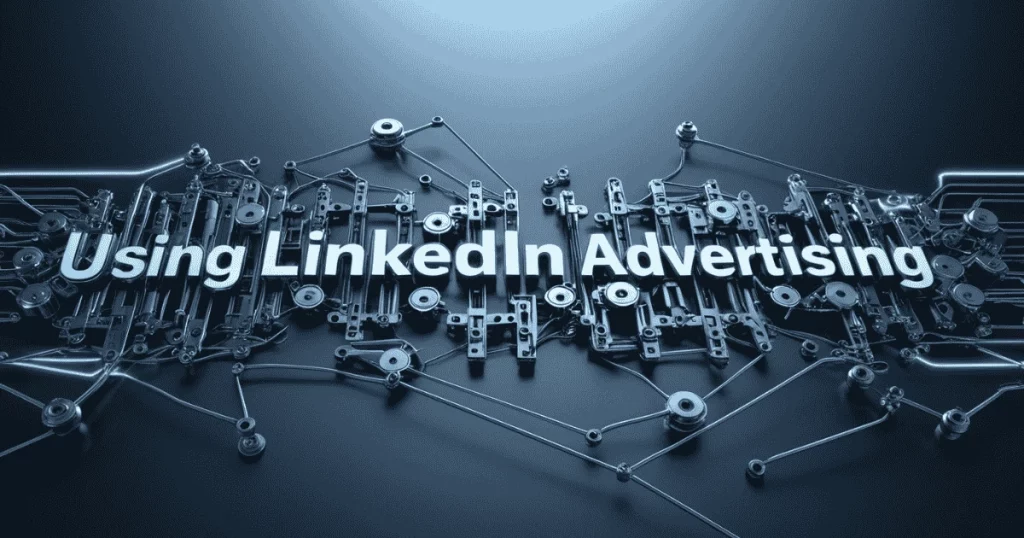
While organic strategies are incredibly effective on LinkedIn, there’s a ceiling—especially if you’re looking to scale quickly or enter new markets. That’s where LinkedIn Ads come in. For B2B brands in Thailand, paid campaigns can amplify your visibility, attract high-value leads, and complement your organic efforts with precision targeting.
Sponsored Content vs Message Ads
LinkedIn offers multiple ad formats, but the two most impactful for B2B lead generation in Thailand are Sponsored Content and Message Ads.
- Sponsored Content: These are promoted posts that appear in your target audience’s feed. They’re great for:
- Promoting lead magnets (eBooks, webinars)
- Sharing client success stories
- Positioning your brand with value-based content
- Message Ads: These land directly in your audience’s LinkedIn inbox—great for initiating conversations or offering gated resources. However, use them sparingly; poorly written Message Ads feel spammy fast.
🟢 Tip: Sponsored Content generally has higher engagement in Thailand, especially when paired with a strong CTA and localised imagery.
Targeting for Thai B2B Audiences
LinkedIn’s targeting is one of the most powerful in B2B marketing. You can refine your audience by:
- Job title & function: Speak directly to Marketing Directors, Procurement Officers, or Founders.
- Industry & company size: Tailor your message to SMEs, mid-size firms, or large enterprises.
- Location: Focus on Thailand, but also consider targeting regional hubs like Singapore or Kuala Lumpur for cross-border services.
Also, don’t overlook language preferences. Bilingual ads (English/Thai) tend to resonate more deeply and increase CTR.
Creating High-Converting Ad Funnels
A successful LinkedIn ad isn’t just about the click—it’s about what happens next. Here’s how to build an effective funnel:
- Awareness: Promote helpful content—an industry trend report or checklist—to earn attention and trust.
- Consideration: Retarget those who engaged with your first ad using a more focused offer, such as a case study or client testimonial.
- Conversion: Drive qualified leads to a landing page with a clear CTA, like “Book a Free Strategy Call” or “Download Our Proposal Kit.”
🟢 Expert Insight Box:
“One of our Thai logistics clients reduced their cost per lead by 40% using Message Ads in Thai, targeted at procurement heads in Bangkok. Relevance and local context make all the difference.” – Northern Kites
With the right targeting, creative, and follow-up, LinkedIn Ads can become a predictable growth engine for your B2B business.
Measuring Success: Analytics, KPIs, and Next Steps
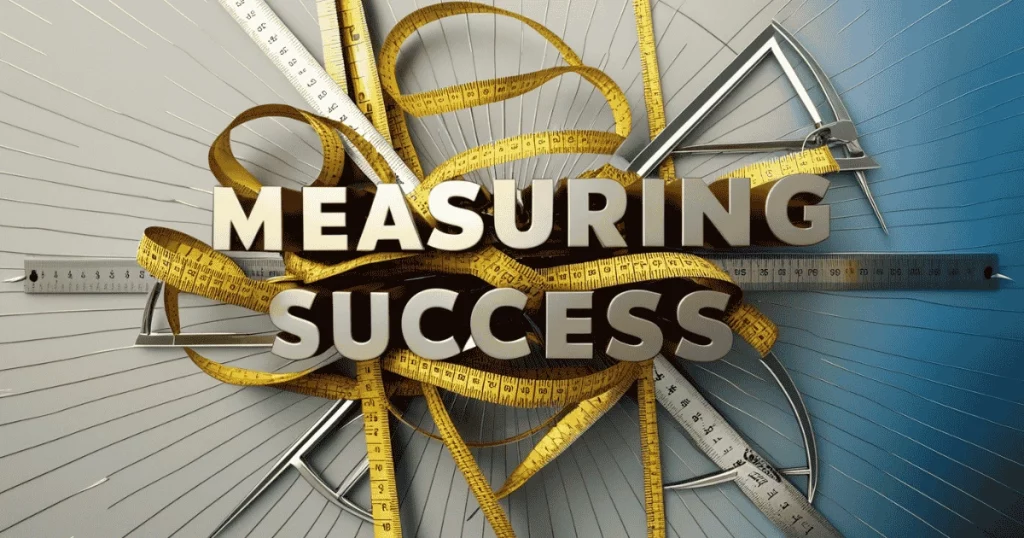
Without tracking your LinkedIn efforts, you’re flying blind. Whether you’re posting organically, running ads, or engaging through DMs, you need to measure what’s working—and what’s not. The good news? LinkedIn offers a suite of built-in analytics, and with a few external tools, you can build a full-funnel view of your lead generation performance.
Key Metrics to Track
Start with these essential KPIs to measure both reach and revenue impact:
- SSI Score (Social Selling Index): A LinkedIn-native metric that tracks how effectively you’re building your personal brand and engaging with the right people. Aim for 70+.
- Post Engagement Rate: Look beyond likes—track comments, shares, and saves. These are stronger signals of real interest and potential buying intent.
- Profile Views & Connection Requests: Spikes often indicate your content or outreach is hitting the right notes.
- Conversion Metrics: DMs initiated, discovery calls booked, and leads generated via form fills or website clicks are the real indicators of ROI.
Tools to Use
To go deeper and track your LinkedIn strategy across channels, integrate with:
- LinkedIn Analytics: For post and audience performance
- Google Analytics (with UTM tracking): To attribute traffic and conversions from LinkedIn to your website
- CRM systems (e.g. HubSpot, Zoho): For lead tracking, segmentation, and nurturing
Make sure every campaign—organic or paid—has a clear CTA, a destination (landing page, form, inbox), and a way to measure follow-through.
Next Steps: Refine and Optimise
Success on LinkedIn isn’t a one-time event—it’s an evolving process. Every post, ad, and outreach message gives you data to refine your approach.
- Double down on content that gets shares and DMs
- Drop tactics that only earn vanity metrics
- Re-test ad creatives and copy quarterly
With the right tracking in place, you’ll know exactly what drives leads—and can scale it confidently.
Final Thoughts: Making LinkedIn Work for Your Business

LinkedIn isn’t just another social network—it’s a B2B growth platform with serious potential for businesses in Thailand. Whether you’re a service provider, consultant, or tech firm, the opportunity lies in how well you position yourself, create value-driven content, and connect with the right people.
Success doesn’t come from a single viral post or one well-targeted ad. It’s the result of a consistent strategy: optimising your profile, showing up with insight-led content, engaging meaningfully, and layering in paid campaigns when it’s time to scale.
The businesses that win on LinkedIn are those that focus on building relationships, not just collecting clicks.
📣 Call-to-Action
Ready to turn LinkedIn into your best-performing lead generation channel?
At Northern Kites, we help B2B businesses across Thailand build powerful LinkedIn strategies that attract, engage, and convert ideal clients—without the fluff or generic templates.
👉 Book your free LinkedIn strategy session and discover exactly what it takes to grow your business through smart, effective LinkedIn marketing.
FAQs
1. How can LinkedIn help me generate B2B leads in Thailand?
LinkedIn allows you to connect directly with decision-makers in your target industries, publish value-driven content, and nurture relationships through organic posts and targeted messaging. With the right strategy, it becomes a powerful tool for consistently attracting high-quality B2B leads in the Thai market.
2. What type of content works best on LinkedIn for Thai audiences?
Bilingual content (Thai + English), client success stories, thought leadership posts, and carousel tips tend to perform best. Thai users engage more with educational content that’s relatable and offers actionable insights, especially when it’s tailored to local challenges.
3. How many times a week should I post on LinkedIn for business growth?
Posting 3–5 times per week is ideal to maintain visibility and build momentum. Consistency matters more than volume, so focus on quality posts that add value rather than just ticking a box.
4. Is it worth investing in LinkedIn Ads in Thailand?
Yes—especially for B2B brands. LinkedIn Ads let you reach niche professional audiences that are hard to access on platforms like Facebook. When targeted correctly, they offer excellent ROI for lead generation and brand awareness in Thailand.
5. What’s the best way to connect with potential clients on LinkedIn without sounding salesy?
Start by engaging with their content and sending a personalised connection request that shows genuine interest. Avoid hard pitches—focus on starting conversations, adding value, and nurturing relationships through consistent interaction and helpful content.


